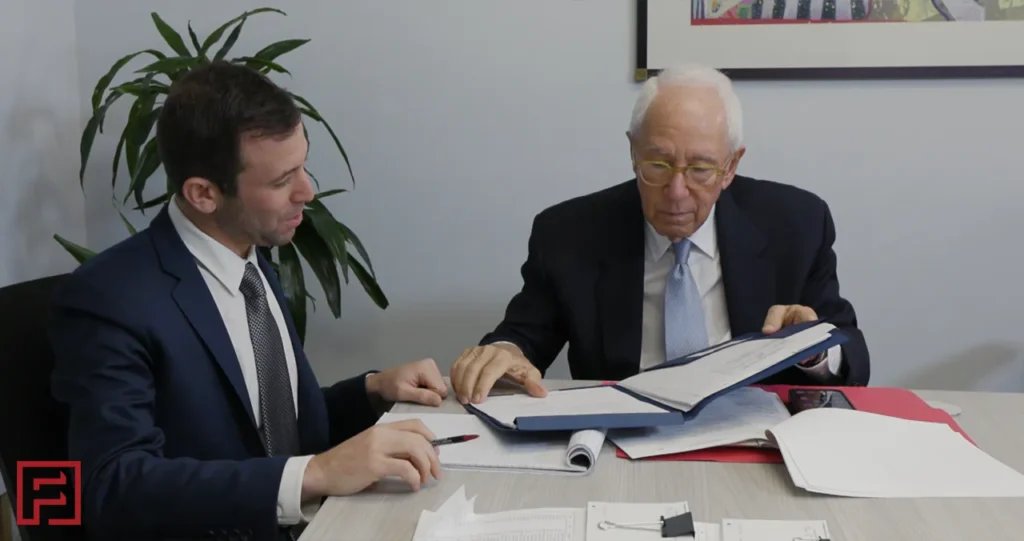Personal Injury Lawyers

Table of Contents
ToggleIf you suffer a serious injury, property loss, or any harm, it’s important to consider how the situation could impact your future finances. It’s crucial to find out if you have the option of having your losses covered by insurance or if you have a legal claim to get compensation.
Consult with personal injury lawyers if you have been harmed. If you’re not sure whether you have a claim, we invite you to contact our bilingual (English and Spanish) legal team at Flaxman Law Group for a free consultation. When you’re injured in Florida or Colorado, our offices in Miami, Homestead, Hollywood, and Denver are here to serve you.
What is Personal Injury?
Some injuries are caused by your own actions or by accident. Injuries caused by someone’s negligence or deliberate action, however, can lead to a personal injury claim.
The challenge is that it is difficult for the average person who doesn’t have an in-depth understanding of the law to know when they have a personal injury claim. For example, if you go to a hospital for a procedure and suffer a complication, was that the result of negligence?
This challenge is why our team at Flaxman Law Group offers free consultations. If you have suffered any harm and are wondering whether you have a claim, just contact us for a consultation.

Types of Personal Injury Cases
The most common types of personal injury include the following:
Traffic Accidents
These are among the most frequent personal injury cases. Victims of car accidents, truck accidents, motorcycle accidents, and other traffic collisions may suffer from physical injuries like whiplash, broken bones, or more severe trauma.
You may assume you don’t need personal injury lawyers because you have auto insurance. However, many survivors of traffic accidents find that they have trouble getting fair compensation from insurers unless they work with personal injury lawyers.
Premises Liability Accidents
These cases tend to occur when someone slips, trips, or falls on someone else’s property due to hazardous conditions such as wet floors, uneven pavement, or poor lighting. Slip and fall accident cases can happen when someone sustains an injury in a store, restaurant, apartment building, or any other property. Property owners may be held responsible for failing to maintain safe premises.
However, premises liability claims can also occur in situations where other types of harm befall a visitor. For example, if someone is attacked on a property due to inadequate safety measures, the property owner can be held liable. If a property owner doesn’t address the presence of asbestos on a property, tenants, employees, and other affected individuals may have the right to pursue a legal claim.
Another common type of premises liability accident happens due to pool accidents. If a child wanders onto a property and falls into a pool, in most states the property owner can be held liable for not properly securing the area.
Medical Malpractice
This type of claim involves injuries caused by medical professionals who fail to provide an acceptable standard of care. Surgical errors, misdiagnoses, medication mistakes, and birth injuries are just some of the situations that can result in a medical malpractice claim.
Product Liability
If a defective or dangerous product causes harm, the manufacturer, designer, or seller can be held liable. Product liability cases can involve anything from faulty electronics to dangerous toys to defective pharmaceuticals.
Workplace Accidents
Employees may file claims for compensation if they are injured at work or suffer an occupational illness due to exposure. These injuries can occur in various industries, including construction, manufacturing, and office settings. Construction sites present unique dangers such as falling debris, unprotected scaffolding, and malfunctioning machinery. These risks can lead to serious injury for workers or even bystanders, and construction site accidents often require an experienced personal injury lawyer because these claims tend to be more complex.
In workplace injuries and illnesses, employees may be covered by workers’ compensation benefits, but many workers find they struggle to get their rightful benefits. Working with personal injury lawyers who have experience with workers’ compensation cases can help.
An experienced attorney can also determine whether you have a third-party claim—against the manufacturer of defective work equipment, for example—that allows you to seek more compensation for your injuries.
Assault and Battery
Personal injury claims can also arise from intentional acts of violence, such as assault or battery. Victims may seek compensation for both physical injuries and emotional distress caused by the assault, and in some cases may be able to file a claim even if the perpetrator is never caught or isn’t charged with a crime.
Animal Bites
Owners can be held responsible if their dog or other pet attacks or bites someone, especially if the animal has a history of aggressive behavior.
Wrongful Death
In cases where an individual dies due to the negligence or intentional actions of another, surviving family members may file a wrongful death claim to seek compensation for their loss, including funeral expenses and loss of income.
Nursing Home Abuse and Neglect
When physical, financial, emotional, or sexual abuse happens in a nursing home or other assisted living facility, residents and their families may be able to sue. In situations where a resident isn’t provided with the necessities of life—including adequate supervision and care, food, water, cleanliness, or medical care—the nursing home can also be held liable for neglect.
Burn Injuries
These injuries can result from incidents like industrial accidents, fires, faulty electrical systems, or exposure to hazardous chemicals. Victims may suffer severe pain, scarring, and long-term medical issues. A personal injury claim can help burn patients pay for care and support.
Recreational Injuries
Sports injuries, trampoline injuries, and injuries sustained in ski accidents, boating collisions, ATV accidents, or any recreational setting, can result in a claim.
This is by no means an exhaustive list of possible personal injury cases. Any time you suffer a serious injury that requires medical care or time off work, it can be valuable to discuss your situation with personal injury lawyers. It may not be obvious whether your injuries were caused by anyone’s negligence. An experienced attorney can explain whether your situation can lead to a claim.

Causes of Personal Injury Accidents
Personal injury accidents are usually caused by negligence or intentional wrongdoing. The causes behind these actions often include:
- Distraction. Distraction can involve talking on the phone, texting, multitasking, or even daydreaming. This can be deadly on the road, in hospital and medical settings, and at work.
- Fatigue. Sleep deprivation slows reaction times and impairs decision-making abilities, which can lead to traffic collisions, medical malpractice claims, workplace accidents, and other types of incidents that cause injury.
- Understaffing. In hospitals, nursing homes, and health care settings, inadequate staffing can mean poor care, errors, infections, or complications. Understaffed workplaces may result in increased accidents due to insufficient supervision.
- Cost-Cutting. When organizations prioritize cost savings over safety, injuries can result. For example, if construction sites do not spend enough money to train employees on safety or provide lower-cost and lower-quality equipment, accidents may be more likely.
- Poor policies. Property owners should have policies in place to make sure their stores, restaurants, hotels, or other public places are safe. Workplaces, too, should have policies to ensure safety protocols are followed. When protocols don’t exist, are inadequate, or aren’t enforced, injuries are more likely. For example, when a manufacturer doesn’t follow testing procedures for a new product, they may be more likely to release a dangerous product.
- Inadequate maintenance. The difference between safety and danger often comes down to maintenance. For example, on a construction site, failure to keep equipment in working condition can lead to accidents. When truck carriers fail to maintain their fleets, trucks may be more likely to break down and cause crashes.
- Lack of supervision. In many environments, including schools, childcare centers, workplaces, nursing homes, lack of proper supervision can lead to injuries.
When you work with personal injury lawyers after being injured, your attorneys will investigate to determine whether any of these causes played a role in your injuries. At Flaxman Law Group, for example, our team works with a network of expert witnesses, investigators, engineers, medical professionals, accident reconstruction experts, and other professionals who can help us determine what factors led to your injuries.
Damages and Compensation in Personal Injury Accidents
What you can recover will depend on the laws in your state and on your specific situation, but in general you may be able to seek compensation for:
- All current and expected future medical bills related to your injuries, including all treatment, hospital stays, rehabilitation, medical devices, medication, and more.
- All income losses, including expected future lost earnings, if you can’t work because of your injury.
- Pain and suffering.
- Loss of consortium, if your injury impacts your ability to maintain a close relationship with your spouse or family members.
- Property damage, including repair and replacement costs of your call, cell phone, and any other property damage you have sustained in the incident that prompted your claim.
In addition, punitive damages may be granted in situations where the defendant’s actions were particularly egregious. In situations where you have lost a close family member, you may also be able to recover compensation for burial costs, funeral expenses, and compensation to replace the financial support your family member would have offered you.
Contact Flaxman Law Group Today
For a free, no-obligation consultation. We are available 24/7, and there is never a fee unless we win.
Finding the Right Personal Injury Lawyer
The right attorney will pursue fair compensation for you with tenacity. Personal injury law is a broad field, so it’s important to find a lawyer who specializes in cases similar to yours.
In addition, look for an attorney who has proven results both in the courtroom and with settlements. This shows the lawyer is willing to go to court rather than accept a lowball offer and it shows the attorney can build a strong case.
It is also important to find an attorney you feel comfortable with—someone who has time for you and who treats you well. You may be working with your lawyer for months and it’s important to have a good working relationship.
Are you looking for a lawyer with these traits? The legal team at Flaxman Law Group has more than 60 years of combined experience handling many types of personal injury cases and our founder, Charles Flaxman, started his career working for insurance companies. He knows how insurance companies work and uses this advantage when negotiating for you. Our team has recovered over $100 million in verdicts and settlements, including multi-million judgments, for our clients.
We treat our clients like family, and we’re proud to say that our clients routinely recommend us to friends and family. We always have time for you and when you work with us, you will have your attorney’s phone number, so you can easily stay in touch.
What to Expect During Your Personal Injury Case
The first step of a personal injury claim is meeting with a personal injury lawyer for a consultation. This is typically free, and during this meeting, the lawyer will evaluate the strength of your case and determine whether they can represent you.
If you decide to move forward, your lawyer will begin gathering evidence to support your case. Your lawyer will then launch the official claim. In many states, this involves drafting a demand letter that outlines your injuries and the compensation you’re seeking. Once the letter is sent, settlement negotiations will usually begin.
If a fair settlement cannot be reached, your lawyer may recommend filing a lawsuit. Once a lawsuit is filed, both parties exchange relevant information that is relevant to the case, in what is known as the discovery phase. Your attorney will continue to negotiate. However, if a settlement isn’t reached, the case will proceed to trial, where a judge or jury will determine the outcome, including how much compensation, if any, you should receive.
Throughout the process, you will of course want an attorney to help you. To get started today, contact Flaxman Law Group for a free consultation.
Helpful Article
FREE CASE REVIEW
50+ Years of Combined Experience,
Personal Attention to Every Case
Testimonials

4.9
(386 Reviews)
"Friendly and professional customer service. From the receptionist to the paralegals, everyone makes you feel comfortable. Best firm I’ve ever dealt with."
- Catherine M.
"Thank you! This guy is great and really knows what he is doing. I've had to hire several people throughout the years for similar services and Mr. Flaxman is the best by far. I would recommend him to anyone.”
- Jeff W.
"Very prompt reply. Confident in his abilities. Educated me so I wasn't overwhelmed with the lingo. Very personable. Thank you again for helping me out Mr. Flaxman!!"
- Tayla M.
Practice Areas
- Personal Injury Lawyers
- Anti Eviction Act Lawyers
- Bike Accidents Lawyers
- Car Accidents Lawyers
- Construction Accidents Lawyers
- Landlord-Tenant Disputes Lawyers
- Toxic Mold Lawyers
- Medical Malpractice Lawyers
- Motorcycle Accidents Lawyers
- Nursing Home Abuse Lawyers
- Pedestrian Accidents Lawyers
- Premises Liability Lawyers
- Product Liability Lawyers
- Slip & Fall Lawyers
- Spinal Cord Injury Lawyers
- Traumatic Brain Injury Lawyers
- Truck Accident Lawyers
- Wrongful Death Lawyers
- Workers Compensation Lawyers
